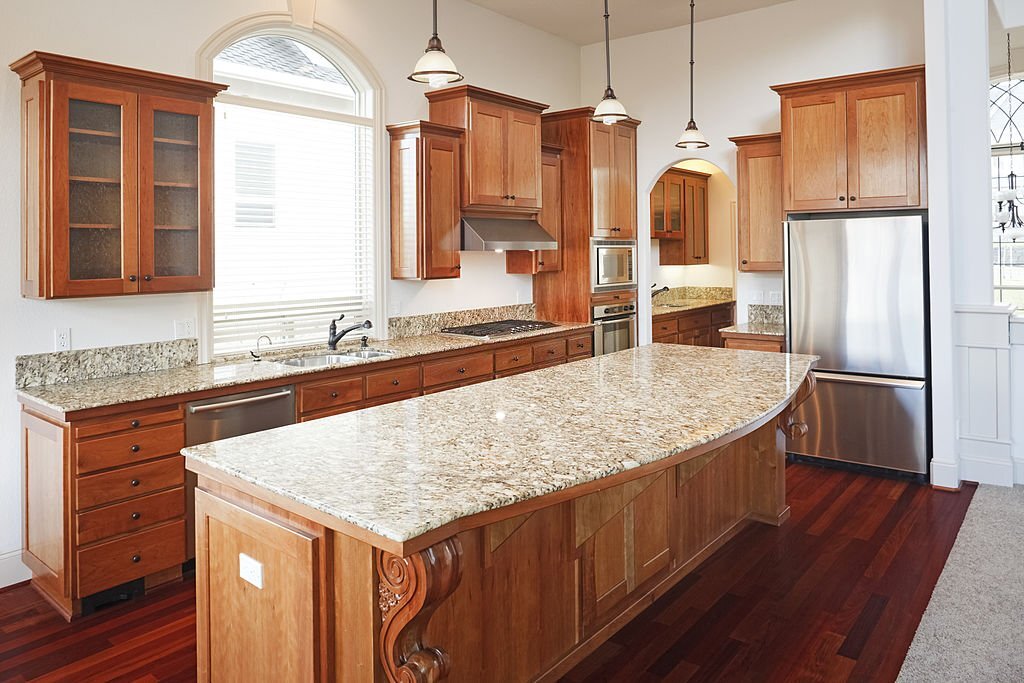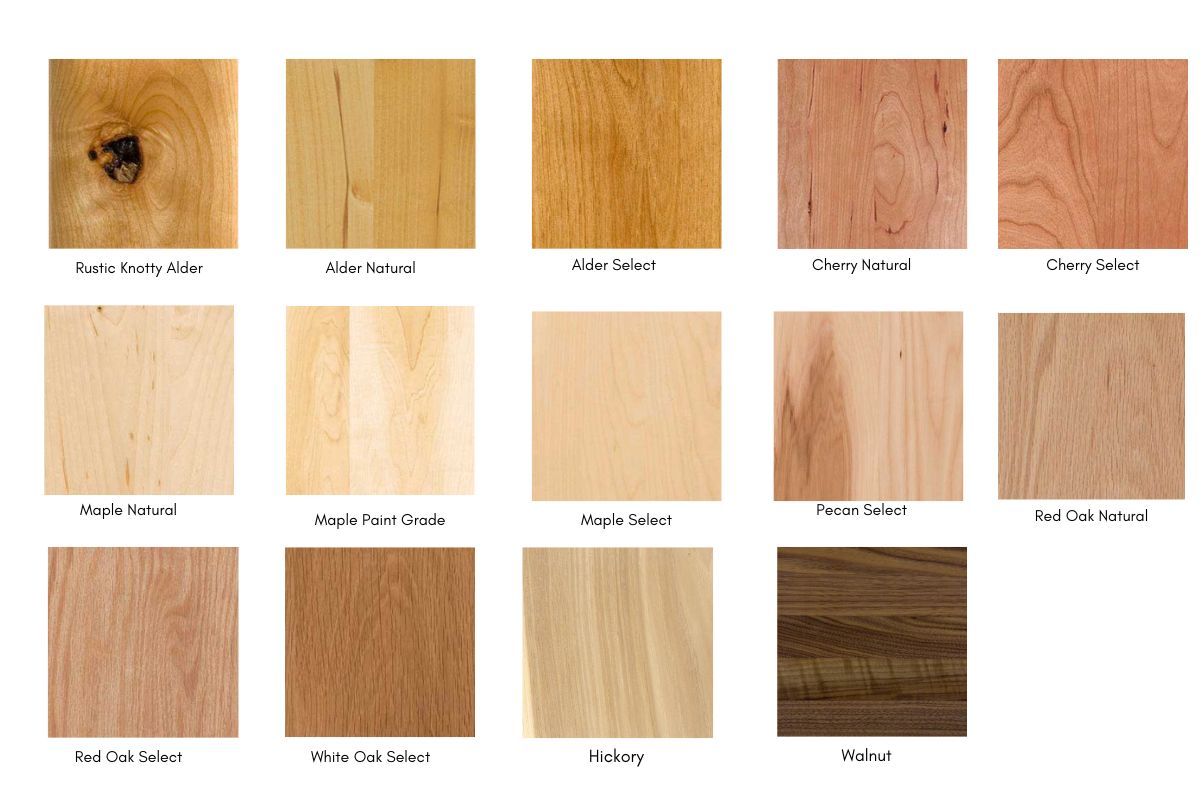Cherry and Oak Cabinet Aesthetics: Cherry Vs Oak Cabinets

Cherry and oak are popular choices for kitchen cabinets, each offering a distinct aesthetic appeal that can transform the look and feel of your space. Understanding the visual characteristics of these woods can help you make an informed decision about which best suits your kitchen design.
Cherry and Oak Cabinet Grain Patterns
The grain patterns of cherry and oak woods contribute significantly to their visual appeal. Cherry wood features a straight grain with a subtle, delicate figure. The grain can sometimes exhibit a slight curl or interlocked grain pattern, adding a touch of visual interest. In contrast, oak boasts a prominent, pronounced grain pattern, often characterized by bold rays and medullary rays, creating a more dramatic and rustic look.
Cherry and Oak Cabinet Colors
The color of cherry and oak wood also plays a crucial role in their aesthetics. Cherry wood is known for its rich, reddish-brown hues, which deepen over time with exposure to sunlight, developing a warm, inviting patina. Oak, on the other hand, exhibits a range of colors, from light blonde to deep brown, depending on the species and its treatment.
Cherry and Oak Cabinet Finishes
The choice of finish can significantly enhance the beauty of cherry and oak cabinets. Cherry wood responds well to both traditional and contemporary finishes. A natural oil finish highlights the wood’s natural color and grain, while a stain can accentuate the wood’s depth and warmth. Oak wood, with its robust grain, can be finished with a variety of stains, paints, and glazes to achieve a desired look.
Cherry and Oak Cabinet Styles
Cherry and oak cabinets are well-suited for various kitchen styles, depending on their specific characteristics and finishes.
- Cherry cabinets are often associated with traditional and transitional kitchen styles. Their rich color and subtle grain pattern create a warm and inviting atmosphere. Cherry cabinets can be paired with traditional hardware, such as brass or nickel pulls, and complement granite or marble countertops.
- Oak cabinets, with their prominent grain and versatility in color, are suitable for a wider range of kitchen styles, from traditional to modern. For a rustic aesthetic, choose a natural finish that showcases the wood’s grain. For a more contemporary look, consider a painted finish or a dark stain.
Cherry and Oak Cabinet Countertop and Backsplash Combinations
Cherry and oak cabinets can be paired with various countertop and backsplash materials to create a cohesive and visually appealing kitchen design.
- Cherry cabinets complement a range of countertop materials, including granite, marble, quartz, and soapstone. The warm tones of cherry wood blend beautifully with the natural patterns and colors of these materials. For a backsplash, consider a subtle tile pattern or a simple glass tile to enhance the overall elegance of the space.
- Oak cabinets, with their versatile color range, can be paired with various countertop materials. Lighter oak cabinets work well with lighter countertops, such as white quartz or light-colored granite. Darker oak cabinets can be paired with darker countertops, such as black granite or soapstone. For a backsplash, consider a mosaic tile, a brick pattern, or a natural stone tile to complement the rustic aesthetic of oak cabinets.
Durability and Maintenance

Choosing between cherry and oak cabinets is a significant decision, and understanding their durability and maintenance needs is crucial. Both woods are known for their strength and longevity, but they have distinct characteristics that influence their performance over time.
Durability Comparison
The durability of wood is often measured by its hardness, density, and resistance to scratches and dents. Cherry wood is considered a moderately hard wood, while oak is a very hard wood. This means oak is generally more resistant to dents and scratches. Cherry wood, however, is known for its beautiful grain and rich color, which can be enhanced over time with proper care.
- Hardness: Oak has a Janka hardness rating of 1360, while cherry has a rating of 995. This indicates that oak is significantly harder than cherry.
- Density: Oak is also denser than cherry, making it more resistant to warping and cracking.
- Resistance to Scratches and Dents: Due to its higher hardness and density, oak is generally more resistant to scratches and dents than cherry. However, both woods can be susceptible to damage if not properly cared for.
Maintenance Requirements
Both cherry and oak cabinets require regular cleaning and maintenance to preserve their beauty and longevity.
- Cleaning: Both cherry and oak cabinets should be cleaned regularly with a soft cloth and a mild cleaning solution. Avoid harsh chemicals or abrasive cleaners, as they can damage the wood’s finish.
- Finishing: Both cherry and oak cabinets typically have a protective finish applied to them. This finish helps to protect the wood from moisture, stains, and scratches. It is important to reapply the finish periodically, especially in high-traffic areas.
- Repairs: Both cherry and oak cabinets can be repaired if they become damaged. However, repairs can be more complex for cherry due to its softer nature. It is best to consult a professional for any significant repairs.
Pros and Cons
Cherry Cabinets
- Pros:
- Beautiful grain and rich color that deepens over time.
- Relatively affordable compared to some other hardwoods.
- Easy to work with, allowing for intricate designs.
- Cons:
- Softer than oak, making it more susceptible to scratches and dents.
- Can be prone to discoloration if exposed to direct sunlight.
Oak Cabinets
- Pros:
- Very durable and resistant to scratches and dents.
- Known for its longevity and stability.
- Available in a wide variety of styles and finishes.
- Cons:
- Can be more expensive than cherry.
- Can be more difficult to work with, limiting intricate designs.
- May have a less vibrant color than cherry.
Cost and Value

Cherry and oak cabinets are known for their beauty and durability, but they also come with a price tag that reflects their quality. Understanding the cost factors and long-term value of these materials can help you make an informed decision for your kitchen renovation.
Typical Price Range
The cost of cherry and oak cabinets can vary significantly depending on factors such as cabinet style, construction, and customization options. Here’s a general overview of the typical price range:
- Cherry Cabinets: Cherry cabinets typically cost more than oak cabinets due to the higher cost of cherry wood and the more intricate craftsmanship often involved in their construction. The average price range for cherry cabinets is between $200 and $500 per linear foot, with higher-end custom cabinets costing upwards of $700 per linear foot.
- Oak Cabinets: Oak cabinets offer a more affordable option compared to cherry cabinets. The average price range for oak cabinets is between $150 and $400 per linear foot, with higher-end custom cabinets costing upwards of $600 per linear foot.
Long-Term Value and Resale Potential, Cherry vs oak cabinets
Both cherry and oak cabinets are known for their longevity and durability, making them a valuable investment for your home. Their timeless appeal and natural beauty can enhance the value of your property, especially in the long run.
- Cherry Cabinets: Cherry cabinets, with their rich color and elegant grain, are often considered a premium choice. They can significantly enhance the value of a home, especially in higher-end properties. Cherry cabinets are known to age gracefully, developing a warm patina over time, further increasing their value.
- Oak Cabinets: Oak cabinets are also a solid investment, offering excellent durability and a classic look. While they may not command the same premium as cherry cabinets, they still add significant value to a home, particularly in traditional or rustic styles. Their sturdy construction and natural resilience make them a reliable choice for long-term use.
Cost-Saving Strategies
Incorporating cherry or oak cabinets into your kitchen renovation project doesn’t have to break the bank. Here are some cost-saving strategies to consider:
- Choose a Simpler Cabinet Style: Opting for a simpler cabinet style, such as shaker or flat-panel doors, can reduce the overall cost. These styles require less intricate craftsmanship and are often more affordable.
- Limit Customization: While customization options can enhance the beauty and functionality of your cabinets, they can also add significantly to the cost. Consider limiting customization to essential features and opting for standard cabinet sizes.
- Consider Semi-Custom Cabinets: Semi-custom cabinets offer a balance between affordability and personalization. They provide a range of options for door styles, finishes, and hardware, while still being more cost-effective than fully custom cabinets.
- Shop Around: Get quotes from multiple cabinet manufacturers and suppliers to compare prices and find the best value for your budget. Consider manufacturers that offer discounts for bulk orders or seasonal sales.
- DIY Installation: If you’re comfortable with DIY projects, consider installing the cabinets yourself. This can save you significant labor costs and allow you to control the quality of the installation.
Cherry vs oak cabinets – Cherry or oak? It’s a tough call, but if you’re looking for a classic look, you can’t go wrong with either. But if you want something more modern and versatile, you might want to consider white cabinets with matte black hardware.
It’s a timeless combo that can be dressed up or down depending on your style. But hey, at the end of the day, it’s all about what you like best. Cherry or oak, white or black, it’s your kitchen, make it your own!
Cherry or oak, it’s a tough call for your kitchen, man! Both bring their own vibe, but if you’re going for a classic look with a modern twist, you gotta check out black stainless steel appliances with honey oak cabinets.
That combo is timeless, and those appliances just pop against the warm wood. But hey, cherry’s got that deep, rich color that’s super classy, too. It all comes down to your personal style, bro!
